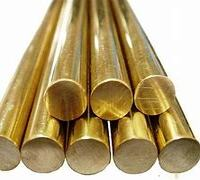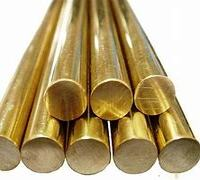1. Introduction
Just 48 hours ago, a major electronics recycler in Texas announced it would no longer accept burned copper wire due to new EPA enforcement actions targeting toxic emissions from informal burning practices. This move has sparked renewed interest in safe, legal methods for stripping copper wire—especially among DIY recyclers and small-scale scrappers looking to get top dollar without harming the environment.

Stripping copper wire properly not only increases your payout at scrap yards but also ensures compliance with local regulations. Whether you’re salvaging from old appliances, construction leftovers, or HVAC systems (which often use aircon copper pipe and copper lines), knowing how to extract clean copper is essential. In this guide, we’ll walk you through the best way to strip copper wire, compare tools, and explain how stripped copper ties into broader copper products like copper rod, copper strip, and copper bonded ground rods.
2. Why Strip Copper Wire?
Unstripped insulated wire fetches significantly less at scrap yards than bare bright copper. Clean, stripped copper can sell for nearly double the price of insulated cable. Plus, many reputable buyers now reject burned wire entirely—so burning copper wire for scrap is both unsafe and financially unwise.
Stripped copper isn’t just for resale. It’s often repurposed into copper rod for welding, copper strip for earthing, or even melted down into copper ingot or copper bars for industrial use. Understanding this ecosystem helps you see the bigger picture: your scrap could become part of a copper earth rod or flexible copper bus bar downstream.
3. Tools You’ll Need
- Manual wire strippers (for small jobs)
- Automatic wire stripping machines (for volume)
- Utility knife (use with caution)
- Heat gun (optional, for tough insulation)
- Safety gloves and goggles
Avoid using open flames or burning—it releases harmful fumes and degrades copper quality. Many scrap yards test for oxidation or residue and will downgrade or reject burned material.
4. Step-by-Step: Best Way to Strip Copper Wire

Start by sorting your wire. Separate thick cables (like THHN or building wire) from thin strands (like motor windings). Thicker wires are easier to strip mechanically and yield more value.
For small batches, use manual strippers: clamp the tool at the end of the insulation, twist slightly, and pull. For long runs, score the insulation lightly with a utility knife, then peel it back like a banana—never cut into the copper itself.
For high-volume work, invest in an automatic stripper. These machines feed wire through rotating blades that cleanly remove insulation without nicking the copper. They’re ideal if you’re regularly stripping wire for recycling or running a side hustle.
If dealing with stubborn PVC or rubber insulation, gently warm it with a heat gun to soften before peeling. This reduces tearing and keeps the copper intact.
5. Common Mistakes to Avoid
Don’t burn insulation off—this oxidizes the copper and violates environmental rules in most U.S. states and EU countries.
Don’t mix copper types. Keep bare bright separate from #1 copper (clean insulated) and #2 copper (dirty or mixed). Purity affects pricing.

Don’t overlook copper-rich sources like AC units. Air conditioner copper pipe and copper tubing often contain high-grade copper that can be cut and sold alongside stripped wire.
6. Beyond Wire: Related Copper Products
Once stripped, copper may be processed into various forms. For example, clean scrap can be drawn into copper round bar or rolled into flat copper strip used in electrical grounding. Products like copper strip for earthing (e.g., 25x3mm) or copper bonded steel ground rods rely on high-purity copper sourced partly from recycled wire.
Similarly, copper brazing rod and copper to copper welding rod are made from refined copper—often starting as scrap. Even niche items like copper tape for snails (used in gardening) originate from rolled copper strip.
If you’re sourcing materials beyond wire, you might encounter terms like copper clad earth rod, beryllium copper strip, or nickel plated copper strip. These specialty alloys serve specific industrial roles but still trace back to base copper metal strips derived from recycled or mined sources.
7. Where to Sell or Repurpose Stripped Copper
Check local scrap yards for current copper rod price and copper strip price trends. Many now offer premium rates for pre-sorted, clean copper. Apps like iScrap or Scrap Monster can help locate buyers near you—just search ‘copper strip near me’ or ‘copper bars for sale’ if you’re buying instead.
For hobbyists, leftover thin copper strips can be used in crafts, electronics, or even as edging. A roll of copper strip is versatile—and 1mm copper strip is especially popular for DIY projects.
8. Conclusion
Stripping copper wire correctly boosts your returns, protects the environment, and connects you to a larger copper economy—from copper pipe soldering leftovers to copper bonded earthing rods. Stick to mechanical methods, avoid burning, and always sort by purity. With the right approach, what starts as old wiring could end up as part of a copper bus bar, a copper roof strip, or even new copper pipework in someone else’s home.
Our Website founded on October 17, 2012, is a high-tech enterprise committed to the research and development, production, processing, sales and technical services of ceramic relative materials such as How. Our products includes but not limited to Boron Carbide Ceramic Products, Boron Nitride Ceramic Products, Silicon Carbide Ceramic Products, Silicon Nitride Ceramic Products, Zirconium Dioxide Ceramic Products, etc. If you are interested, please feel free to contact us.

